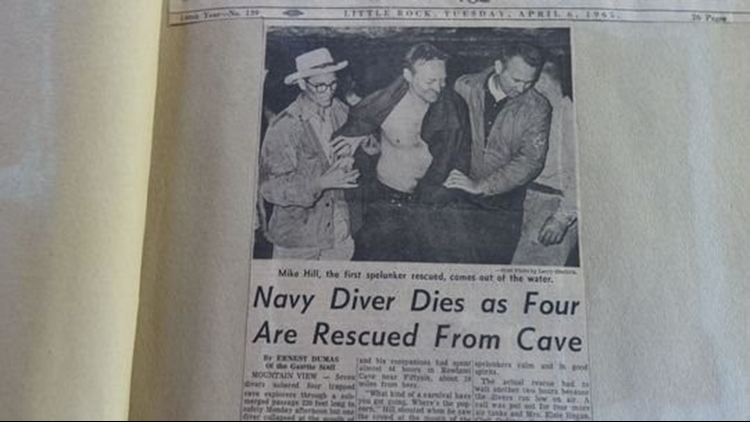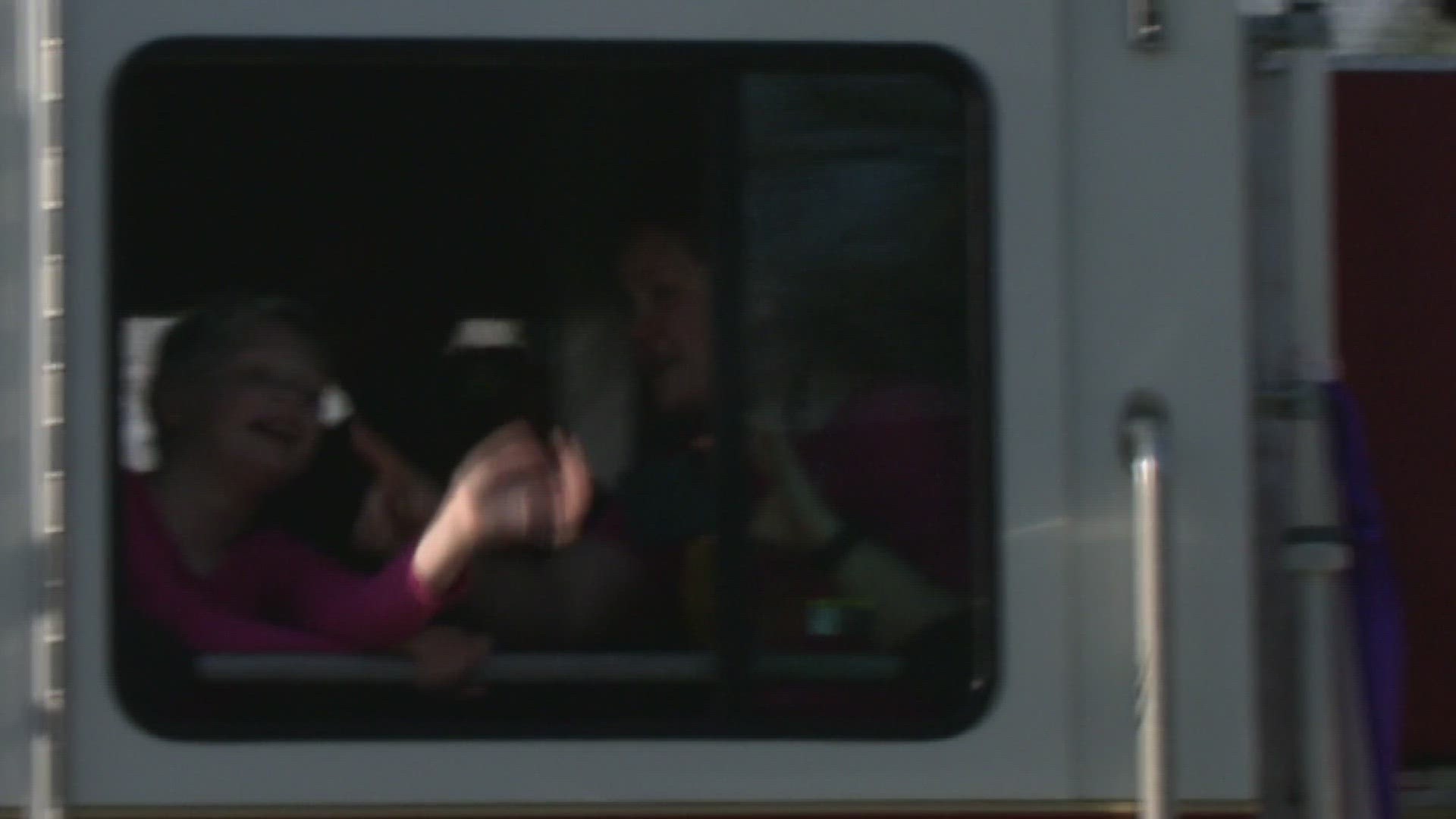The world is watching as an international team of rescue personnel work furiously in northern Thailand to save members of a soccer team trapped underground in a flooded cave.
Steve Wilson, a retired director of the Arkansas Game & Fish Commission and a Baxter County resident, is one of those people. But for Wilson, the danger and fear the young boys face is something Wilson knows well.
In April of 1965, along with three friends, Wilson was exploring Stone County's Rowland Cave. The four men, ranging in age from 20 42, were all experienced cave explorers. All were experienced swimmers. The men were searching for a potential route through Rowland Cave into Blanchard Springs Caverns.
The men planned to spend a weekend searching for the route and entered Rowland Cave on Friday, planning to exit on Sunday. Things didn't go according to plan, though.
By Sunday morning, they had not found a connection to Blanchard Springs and turned back around. They headed towards the entrance of Rowland Cave.
When they got to what is called the "Cathedral Room" they found conditions had changed. Dramatically.
"The stream we were following trying to get to Blanchard did not fluctuate with the outside rain event," Wilson recalled. "When we got to the Cathedral Room Sunday morning, we discovered it was flooded. When we walked through it on Friday, it was muddy. On Sunday morning, it was just an ocean of water."
Fortunately for the explorers, two of their group had been unable to make the trip. One of those men knew the rains would trap the men and called for help. That call was answered by local volunteers who mounted an initial rescue attempt.
Wilson described the tunnel leading out of the Cathedral Room and to the mouth of the cave as an upside down dome. The local volunteer rescue crew tried twice and failed to make it through the passage.
Meanwhile, The call for help reached the east coast and the response was swift. Three U.S. Navy divers and three volunteer rescue crew members from the National Speleological Society boarded a plane at Andrews Air Force Base and flew to Little Rock.
Once there, another plan went out the window thanks to conditions.
"Once they reached Little Rock, they were going to take a helicopter to the cave," said Wilson. "But it was rainy and foggy that weekend so the state police drove them to the cave."


Not panicking
As those outside mounted another rescue attempt, inside the cave the mood was fine. The men figured they would simply wait out the weather and walk out of the cave. They were cold, hungry, and they had some concern, but they felt ultimately they would walk out unharmed.
The men used a knife to short an electrical line supplying power for lights in the cave, strung by an entrepreneur who gave limited tours of the cave to tourists. Those outside saw the signal.
Once again, it didn't go quite as planned.
"They saw the signal so they started sending back Morse code," Wilson said, smiling at the memory. "The problem was, none of us knew Morse code. They sent these long, complicated messages and got nothing from us. They interpreted us not responding to their messages as a bad sign."
Their first inkling rescuers were on their way came on Wilson's watch. The three others were sleeping while Wilson stood a watch, monitoring the level of the water in the Cathedral Room.
As Wilson stood watch in the pitch black silence, a sound came.
"When the divers came, their bubbles rolled up the side of that inverted dome and broke the surface," Wilson said. "In the silence, it was quite an amazingly loud sound."
The men had used sticks to mark the water level. Wilson watched the marks closely. He didn't think divers were on their way in, rather they thought their rescue would come in the form of Mother Nature.
"We thought it was a siphon, we thought the water was going to go down," said Wilson. "But, the water wasn't moving."
Instead, a diver emerged. The man handed Wilson the end of a rope.
"He told me to hang on to the rope, that he had to go back and get his buddy who was having air trouble," Wilson said. "So here I am, the other three are still sleeping and I'm holding on to this rope as the only evidence any of this happened."
After that, things moved quickly and one by one, Wilson's friends were pulled to the surface, holding the flipper of a diver in front of them while a second diver trailed behind.
Wilson and his companions were different from the teens trapped in Thailand. The men were much older, had experience in caves and were competent swimmers. But, there are two striking similarities.
The fear
The four men were rescued using self contained underwater breathing apparatus, or scuba gear. The divers gave the men quick lessons before outfitting them and guiding them out of the cave.
"I had never been scuba diving before," Wilson said. "They told us to breathe naturally and not to panic."
They were simple instructions, but difficult to follow trapped in the pitch-black underground of the cave. Most people first put on and use scuba gear during broad daylight in a shallow pool during scuba certification.
Wilson, in his 70s now, has led a life filled with outdoor adventures. During those adventures, he has found himself in some tight spots of trouble. Nothing in all those decades he said has come close to the fear he felt submerging in the dark that day.
"I was in a state of near panic for the entire time," Wilson said. "You wonder whether you're doing it right. You wonder whether you're going to run out of air, whether the mask is going to come off. I was just so unaccustomed to any of it."
Wilson was the last of the four to be taken to the surface. It was a trip he says felt like it took about an hour. Newspaper accounts say it took less time.
"It felt like a long time, that's for sure," Wilson said, recalling the event. "It was really just about 200 yards, but it sure felt like a long time to me."
A fallen rescuer
As Wilson was brought out of the cave, one of them men who led him out, U.S. Navy diver Lyle Thomas, suffered an apparent heart attack. Despite a doctor on scene providing immediate care, Thomas died.
On Friday, a former Thai Navy SEAL volunteering as part of the ongoing effort to rescue the soccer team died from a lack of oxygen while diving, rescue officials said.
"I think about the man who died every time there's an event like this," Wilson said. "It brings back all those memories." Wilson said he still lives with the guilt of a man giving his life to help Wilson and his friends survive.
However, Wilson had something else in common with the teens in Thailand. He had family to tell him rescue workers know the risks.
"My mother was a registered nurse," Wilson said. "She told me that was his job. She told me he volunteered to do it and that he did it well."
As for the boys in Thailand, when they find out a man gave his life to save theirs, Wilson has this advice.
"There's a tremendous amount of humanity in something like this. The whole world is watching this," Wilson said of the Thailand rescue efforts. "Everybody cares about them and everybody cares about their survival."
As of 2 p.m. Sunday, four of the 12 boys trapped in the cave in Thailand had been rescued and emergency personnel were preparing a second effort to rescue more of the boys.



